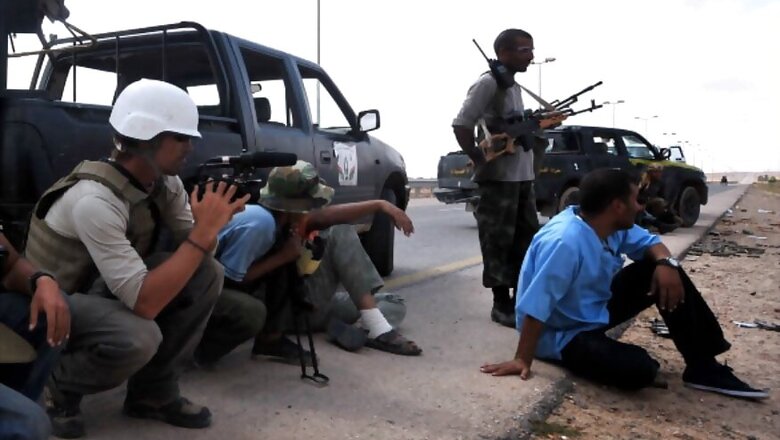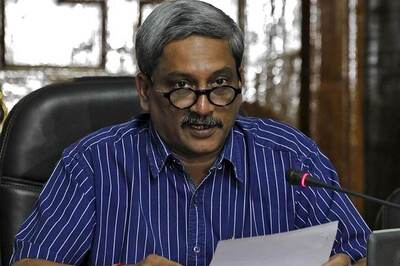
views
Jagendra Singh, a journalist from Shahjahanpur, Uttar Pradesh was allegedly set ablaze by some local policemen and goons who raided his house on June 1, 2015. Jagendra’s friends and family called him exceedingly courageous, but at times reckless for being too critical of those in power. His last statement came from a hospital bed where he lay with severe burns on his body to which he succumbed a week later on June 8, 2015.
A crying Jagendra, in his last video, appears to be saying “Why did they burn me? If the ministers and his goondas had any complaint against me, they could have beaten me instead of pouring kerosene and burning me.”
The report studied every case to have occurred in India since 1992 and narrowed down to 27 cases of those journalists who were slain out of retaliation for their work.
Committee to Protect Journalists’ report also states that there are at least two dozen more cases under scrutiny to ascertain if any political motivation was behind the journalists’ assassination.
While everything in the Indian TV newsrooms appears hunky-dory, the story is not the same for the rural journalists who are more vulnerable and could end up paying with their lives as the report delineates.
Security of Journalists in the states of Uttar Pradesh and Bihar seems to be at the lowest. Rajdeo Rajan, bureau chief of Hindi newspaper, Hindustan – a sister concern of English daily, Hindustan Times, was killed in cold blood by a group of five criminals en route to his home on a bike.
A detailed scrutiny of aforementioned cases reveals startling facts. Poor law and order situation has since long paved the way for criminals to walk scot-free and none of the criminals in the above mentioned 27 cases were brought to justice except for one where the accused was convicted, but later released on appeal.
The CPJ’s report has surely rung alarm bells now, but Press Council of India in 2015 had shed light on the matter thereby also acknowledging that the culprits are getting away with impunity and the need for a nationwide law protecting journalists. However, the council’s demand seems to have fallen on deaf ears and nothing significant has been done by the Narendra Modi government to rid India of this menace.
In March 2016, Editors Guild – an independent body of editors with more than 200 members cutting across local, national newspapers, magazines and electronic media came out with a shocking report. A team of Editors Guild visited Chhattisgarh and found that most of the journalists were working under “tremendous pressure” from the state establishment and Police.
The team also reported that there was a “sense of fear”, especially among journalists reporting from the restive area of Bastar. It further added that there was pressure from the state establishment and Police to write in their favour and not to write anything that the administration perceives to be hostile. Pressure on journalists also mounts from the Maoists’ side.
Historically, the conflict-ridden areas have not been the safest for the journalists. However, the civil war in Syria and Iraq and the rise of the Islamic State made this region the deadliest and most unsafe in the world. As many as 85 journalists had been killed in Syria till October 2015 when CPJ released its Impunity Index Report since the conflict began in 2011.
Alongside Syria and Iraq, the Impunity Index Report features the names of Pakistan, Afghanistan, South Sudan, Brazil, Russia (not in the order of their rankings) as countries where the culprit, in most of the cases, has eluded justice with ease. Shockingly, India and The Philippines are the only two countries to have made their way into the list which are not witnessing any political or economic upheaval, yet the criminals have gotten away easily.
Journalists in India cover myriad issues which entail all kinds of repercussions. CPJ’s report concludes that Politics and Corruption in India are the deadliest beats and most of the journalists, particularly in rural areas who challenge the might of those in power end up paying with their lives.
Even after having a robust democratic structure and a powerful and independent judiciary, India fails to curb violence against journalists and lacks impetus for a proper investigation. India holds another abysmal record of having its name next to Afghanistan, Bangladesh and other conflict-affected states such as South Sudan, Somalia and Syria.
These countries have failed to provide any updates on investigations into the killings of Journalists to biannual impunity report of the Director General of UNESCO, the U.N. agency mandated to promote freedom of expression.



















Comments
0 comment